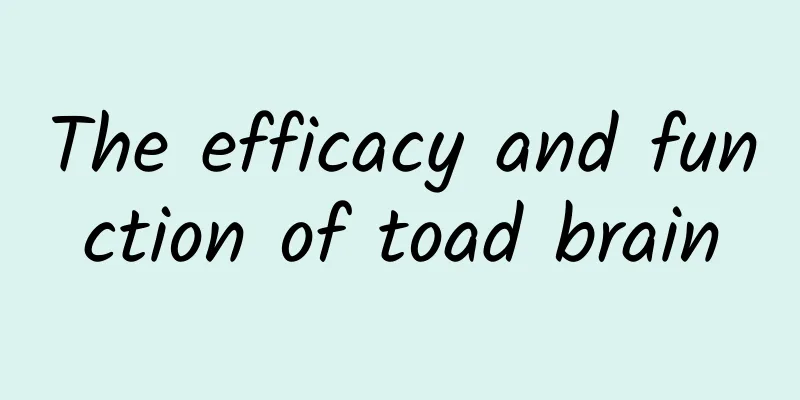AI plays games better than humans? But what's the point of letting AI play games...

|
Welcome to Science Popularization China’s special winter vacation column “ High-tech Classes for Children ”! As one of the most cutting-edge technologies today, artificial intelligence is changing our lives at an astonishing speed. From smart voice assistants to driverless cars, from AI painting to machine learning, it has opened up a future full of infinite possibilities for us. This column will use videos and text to explain to children the principles, applications, and profound impact of artificial intelligence on society in an easy-to-understand way. Come and start this AI journey with us! The following is the text version: (Reading time: about 5 minutes) Playing games seems to be a human-only activity. However, in 2021, Tencent's AI "Juewu" defeated five professional human players in the game "Honor of Kings", which attracted people's attention to AI playing games. In fact, AI playing games had already become popular around 2017, but at that time Alpha Go played chess games, not the mobile phone or computer games that most people are accustomed to. But games are meant to entertain people, so how come AI is also playing games? What are the benefits of letting AI play games? Copyright images in the gallery. Reprinting and using them may lead to copyright disputes. From chess to e-sports In fact, the idea of AI playing games started much earlier than we thought. In 1948, Turing and his colleague Chamberlain designed the chess program Turochamp. The reason for designing such a program was that Turing wanted to show that machines could theoretically simulate anything that the human brain could do, including complex intellectual activities such as playing chess. Unfortunately, because the program was too complicated, Turochamp was not run on any computer before Turing's death, and only a few chess endgame cracking games inspired by Turochamp appeared. Chess is considered a relatively complex board game. In the same period, scientists also developed some chess programs with relatively simple rules. The most representative of these is the checkers program developed in 1950 by a scientist named Arthur Samuel. Initially, the checkers program could simply play against human players, but later, Samuel wanted to add a function to it that would allow it to "self-learn." The checkers program could play against itself, record the results of these games, adjust the score of each move, and ultimately improve its skills. This can be called the earliest self-learning board game. Samuel continued to improve his checkers program until it reached the level of top amateurs. However, due to the limitations of computer hardware at the time, Samuel's checkers program was still somewhat different from the top human chess players. The first program to defeat a human checkers champion was a program called "Chinook" in 1989. However, the rules of checkers are relatively simple, and the game is not as complicated as chess. People still want to see the battle between man and machine in the field of chess. If AI can defeat the top human chess masters, it will undoubtedly prove its strength. This super battle took place in 1997. IBM's supercomputer "Deep Blue" defeated the chess champion Kasparov. Although human chess players have challenged AI since then, they are powerless to turn the tide. AI has achieved a complete victory in the field of chess. After proving their abilities, AI did not stop there. Next, they will challenge human masters in the field of Go. Although Go only has black and white pieces, the possibilities and complexity of Go situations are much higher than those of chess. Therefore, if AI wants to defeat human Go masters, it will take more effort. Nearly 20 years after Deep Blue defeated Kasparov, the Go robot Alpha Go developed by DeepMind defeated human Go champions Lee Sedol and Ke Jie. It can be said that at this point, AI has no rivals in the field of chess. Next, AI began to move into other fields. For example, DeepMind began to train an AI called Alpha Star to play the real-time strategy game "StarCraft 2". In 2019, Alpha Star also reached the level of human masters in this game. Open AI, the company that developed GPT, also trained AI to play games between 2017 and 2019. At that time, they played "Dota 2", and in April 2019, they defeated the then defending champion with a score of 2:0. Later, they played more than 40,000 games with human masters in a 4-day online open tournament, winning 99.4% of the games. Why should AI play games? So the question is, why do scientists want AI to play games? This is because the algorithms and techniques used in training AI to play games can often be transferred to other fields. For example, the deep learning technology of AlphaGo has also been applied in AlphaFold, which has helped human scientists solve many protein folding problems. In addition, when playing games, AI needs to predict the possibility of the next action based on the opponent's actions. Such algorithms can also be applied in natural language processing. Furthermore, the AI's ability to autonomously classify, make decisions, and continuously optimize itself when playing games has applications in many industries. In short, letting AI play games is not to find things for AI to do to entertain itself, but to make AI smarter in the process of solving complex problems. In this process, we continuously optimize AI algorithms to iterate technology. To be precise, the statement that "AI defeats humans" is actually a joke. It is not AI that defeats humans, but human wisdom that defeats humans. Planning and production This article is a work of the Science Popularization China-Creation Cultivation Program Produced by: Science Popularization Department of China Association for Science and Technology Producer|China Science and Technology Press Co., Ltd., Beijing Zhongke Xinghe Culture Media Co., Ltd. Author: Beijing Yunyuji Culture Communication Co., Ltd. Reviewer: Qin Zengchang, Associate Professor, School of Automation Science and Electrical Engineering, Beihang University Planning丨Fu Sijia Editor: Fu Sijia The cover image and the images in this article are from the copyright library Reprinting may lead to copyright disputes |
<<: Children's tic disorder: beware of the health risks hidden in "small movements"
>>: Is laundry powder better or laundry liquid better? It turns out there are some considerations
Recommend
What are the recipes for Lingzhi wine?
Ganoderma lucidum wine has great health value, bu...
The efficacy and function of horseshoe crab shell
Horseshoe crab shell is a famous traditional and ...
The efficacy and function of rabbit ear grass
Rabbit's Ear Grass has a long history, and un...
Can your fat be broken down by not eating staple foods? Uncover the truth about the ketogenic diet!
Losing weight can be said to be a lifelong career...
The efficacy and function of Panax notoginseng
Notoginseng can not only supplement the body'...
Quantum computing accuracy is not high enough? IBM's "error mitigation" technology is expected to solve the problem
In June 2023, IBM Quantum and its collaborators u...
How did these cultural relics survive the centuries of wind and rain and multiple earthquakes and still stand?
Over the long years, the ancient buildings on the...
Protecting Northeast China's black soil and safeguarding China's "rice bowl"
Produced by | Science Popularization China Author...
The efficacy and function of beef tongue
There are so many medicinal herbs in the world, a...
Don't take it lightly! If you have cold legs and feet, there may be something wrong here! Please keep the relief method
In cold seasons, people's bodies are always p...
Pollen season is coming early, pay attention to distinguish between allergies and colds, especially these people
Review expert: Peng Guoqiu, deputy chief physicia...
The efficacy of Lingzhi Fuling Yam Soup
The efficacy of Lingzhi Fuling Yam Soup As the sa...
What are the beauty effects and functions of white Poria cocos
White Poria cocos is one of the more common Chine...
Does your mobile phone system need to be updated frequently? You will know after reading this!
When you receive a reminder for a system update o...
The efficacy and function of rabbit brain
Nowadays, our living standards are constantly imp...





![The efficacy and role of Ma Jiao Er [picture]](/upload/images/67ca339dd36be.webp)



